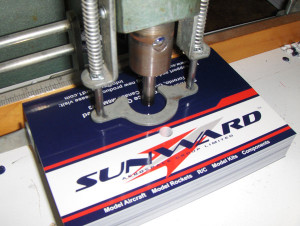Drilling techniques in printing
 Paper drilling is used to bind documents in final form, but having the ability to add, reduce or modify their contents later.It also allows the document to be separated into smaller sections and to be folded easily.
Paper drilling is used to bind documents in final form, but having the ability to add, reduce or modify their contents later.It also allows the document to be separated into smaller sections and to be folded easily.
Of course, such an operation requires the right tools, meaning paper drilling machineries that have applications in different areas: offsetprinting ,digital printing,advertising agencies,copy centres and book production, in fewer words in the whole printing industry, paper converting included.
As a printing related task, perforations are classified according to bursting strength or tpi, which refers to “ties per inch” or “teeth per inch.” The bursting strength is in fact, the measurement of pressure required to separate the document at the location where the document is perforated.
The perforation type is determined by the function and purpose and can be an easy release variety (3 to 6 TPI) or a stiff release variety (10 to 18 TPI). This burst strength is also affected by the thickness and weight of the paper. The areas along the length of the perforation,the ties (or tabs) are meant to “tie” together the sections of a document.
The ties alternate with the teeth (cut areas to form the perforation) and a document contains the same number of ties per inch as teeth per inch. The difference between them is the widths, which are not the same, in order to detach easier the documents sections.
There are at least two aplication methods in paper drilling: online and offline. When applied to paper stocks or other substrates, while printing is called online, when applied before or after the printing job,then is off-line. In terms of machinery, there are certain types of conventional offset presses which enable online perforation, and some digital press manufacturers who provide attachments that can perform some online finishing processes, including paper drilling.
Also many types of off-line paper drilling equipment are available. Perforations can be applied parallel to the grain (paper fibers) of the paper or perpendicular. Both types can be applied at the same time and as full perfs (the full length or width of the printed piece) or partial ( not to the full length or width of the document).Plus,full and partial perforations,can be applied as a combination, depending on the equipment type.
Among innovative technologies in paper drilling, which revolutionised the whole concept is drilling using professional perforating punches. A perforating punch is a tool made of special steel, like a pipe with a sharp point which basically cuts out a piece of the perforated material, in our case, paper.
The advantage of this technique lies in the simplicity and ease with which paper is drilled, as well as the high drilling capacity. A machinery using perforating punches has a simple operating system that allows fixing and changing the punches easily and in a very short time.
Some other models may be equipped with punching knifes allowing perforation of invoices, receipts, delivery notes, consumer bills and other materials that require such an operation. These can be manual or electric machineries and all can be found in one place: www.allforprintmarket.com .
Read more news :
1. There’s a great future in 3D printing
2. Staples Wants to Bring 3D Printing to the Masses
3. World’s Smallest 3D-Printing Pen Is Coming to Kickstarter
4. Is 3D printing facing its Napster moment?
5. Taipei tech team takes 3D printing to the streets
6. RBI to shortly issue Rs 500, Rs 100 notes of 2014 printing year